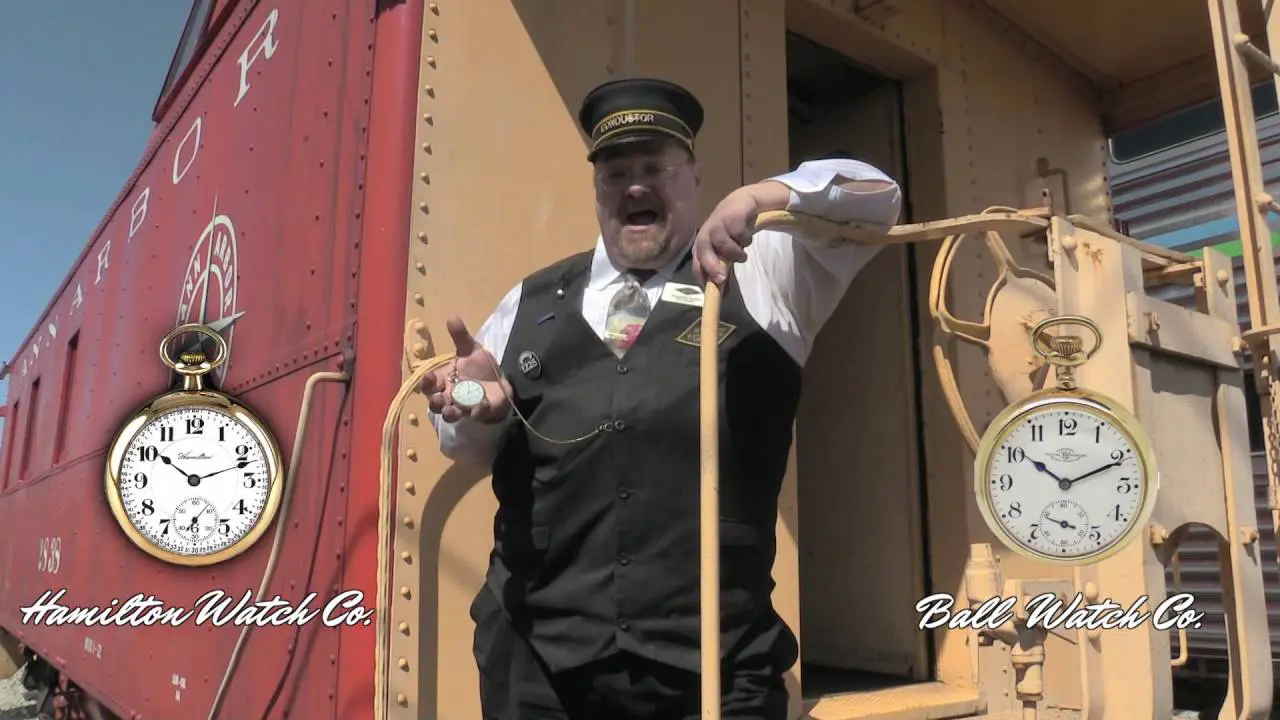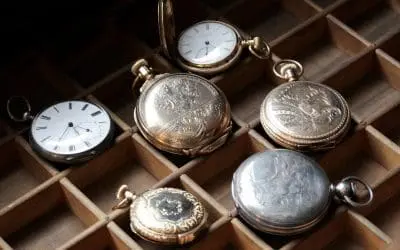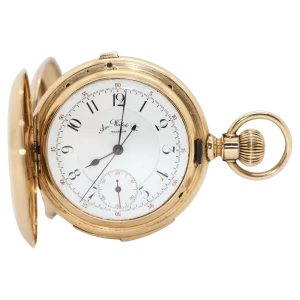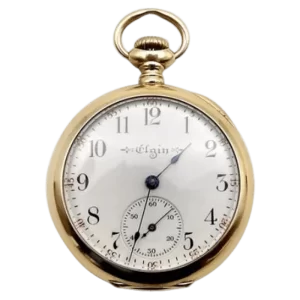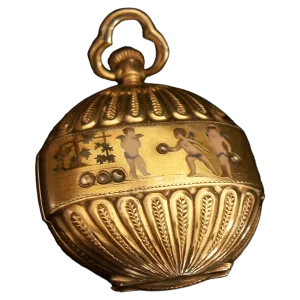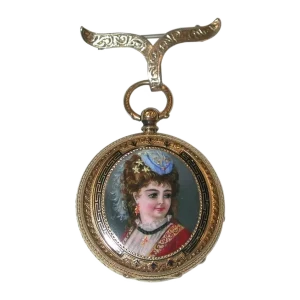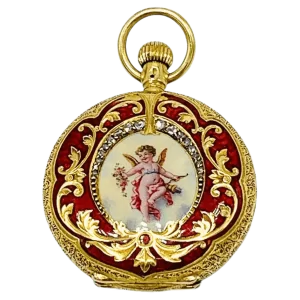Railroad antique pocket watches represent a fascinating chapter in the history of American watchmaking, embodying both technological innovation and historical significance. These timepieces were born out of necessity, as the railroads demanded unparalleled accuracy and reliability to ensure safety and efficiency in train operations. The American watchmakers rose to the challenge, creating watches that were not only precise but also durable enough to withstand the rigors of constant use in varying conditions. By the early 20th century, these watches had achieved remarkable standards, losing no more than 30 seconds per week and maintaining accuracy regardless of position or temperature. As the railroads’ standards evolved between 1890 and 1910, the requirements for these watches became more stringent, leading to the production of both 18 and later 16 size watches that met these exacting criteria. By the 1930s, only size 16 watches with at least 19 jewels, lever set mechanisms, open faces, and adjustments for five positions, temperature, and isochronism were approved for use. Despite these rigorous standards, not all watches built to meet them were accepted by every railroad, as individual railroads often had their own lists of approved watches. This led to the intriguing situation where a watch could be considered railroad “grade” but not necessarily railroad “approved,” adding another layer of complexity and interest for collectors and historians alike.
Many collectors feel that American watchmaking reached its pinnacle with the invention of the railroad watch. In an effort to meet the stringent and rigorous demands of the railroads, where the incorrect time could and did prove disastrous, American watchmakers were called upon to make a watch that was incredibly reliable and incredibly accurate — far more so than any watch previously being manufactured. And they met the challenge! Following years of development, by the turn of the 20th century American watch factories were producing pocket watches of unsurpassed quality. Watches that would lose no more than 30 seconds per week. Watches that were specially adjusted to keep accurate time no matter what position in which they were held, and in both cold weather and hot. Watches where all the major wheels were jeweled in order to prevent wear from long hours, days, years and decades of constant use.
The main requirement for a railroad watch was, of course, that it be accurate. Throughout the twenty years from 1890 to 1910, the various railroads’ watch standards evolved, demanding more stringent adherence to safety and good timekeeping principles. Although minor local differences remained, these standards eventually became well enough established and accepted so that watch companies could build, at reasonable cost, both 18 size, and later 16 size, watches that would be accepted on any railroad. The standards continued to evolve, and by the 1930’s, only size 16 watches were approved, and these watches had to also have at least 19 jewels, be lever set, open face and adjusted to five positions, temperature and isochronism. Some railroads, however, continued to accept watches that were currently in use and which had previously been approved under earlier standards.
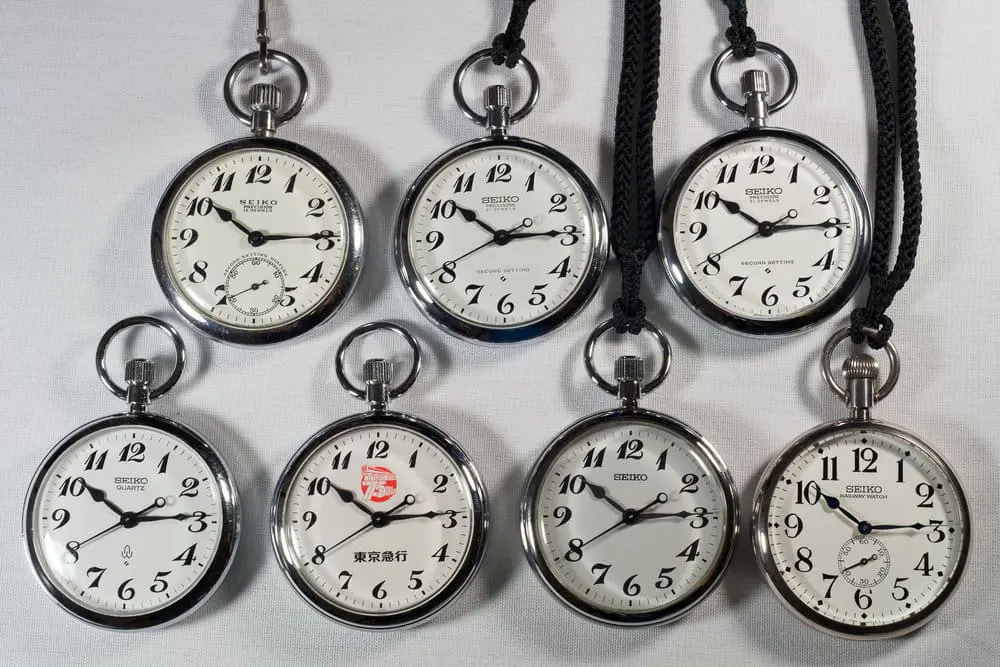
Remember, just because a watch has a picture of a locomotive on the dial or the case doesn’t mean it is actually a “railroad” watch. The same is true with watches that are just marked “railroad special” or the like. A true railroad grade watch MUST meet the specifications set out for railroad watches, and a true railroad approved watch MUST have been either listed by one or more railroads as approved for railroad service or else specifically accepted by a railroad inspector. Some of the more commonly found railroad grade and approved watches include the Hamilton “992,” the Illinois “Bunn Special” and the Waltham “Vanguard,” although there are quite a few more out there. If you are considering paying a lot for a “railroad” watch, though, just be sure you’re getting what you are paying for.

